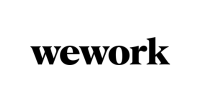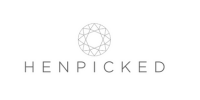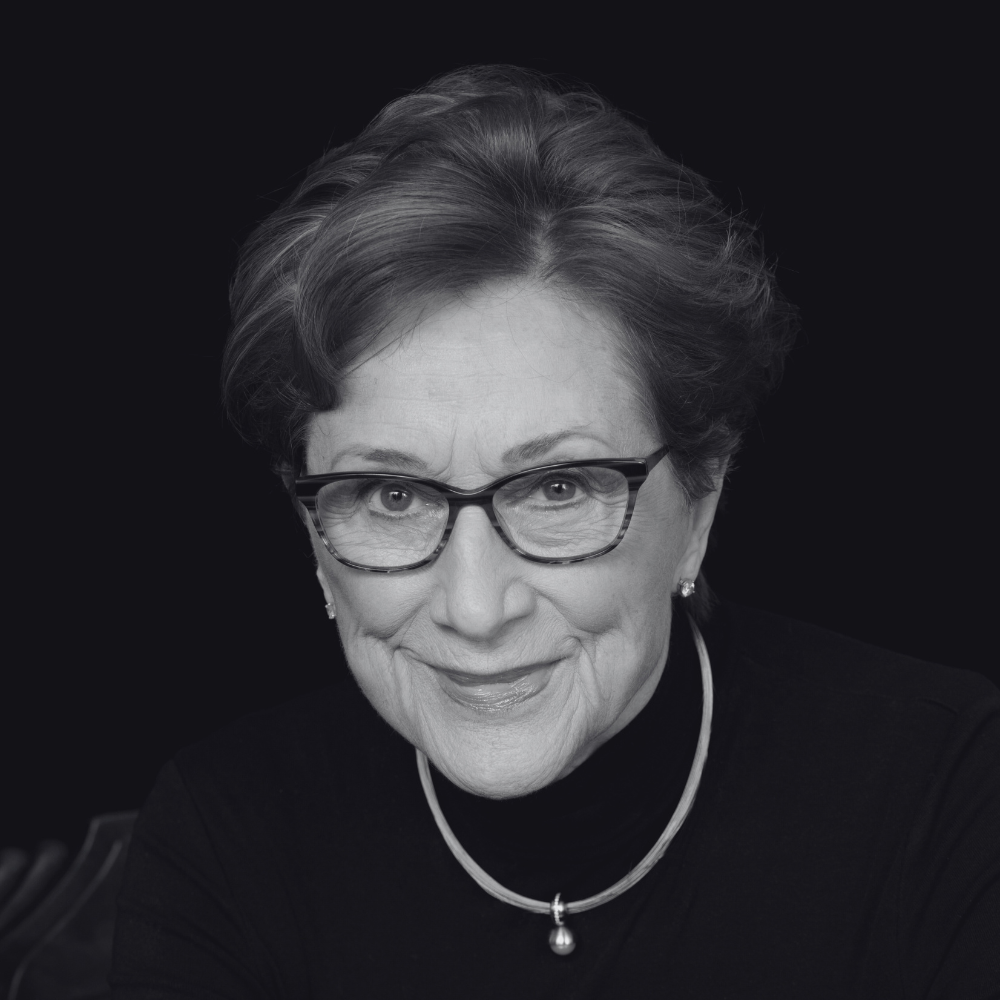Shaping the Future of Work: Wellbeing, Culture & Innovation in the Modern Workplace
The Watercooler Event is a vibrant two-day experience exploring effective ways to create workplaces that empower people to thrive. Join over 6,000 industry experts to exchange ideas, uncover transformative solutions, and celebrate the future of work.
Discover insights from industry leaders on evolving business and people strategies, network with like-minded professionals, and embrace innovative approaches to wellbeing, culture, and productivity.
Meet experts from the following disciplines:
- Wellbeing, Engagement & Mental Health
- HR & Culture
- Diversity, Equality & Inclusion (DE&I)
- Learning & Development
- Employee Benefits
- Occupational Health & Safety
Curating Collaboration with the UK’s Leading Organisations
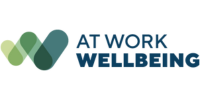
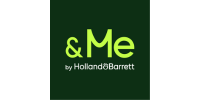

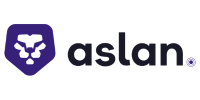
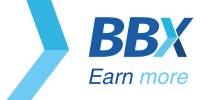
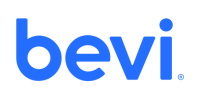


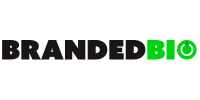


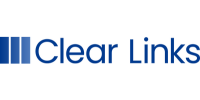


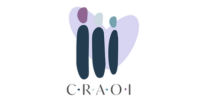




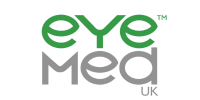
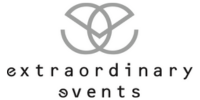


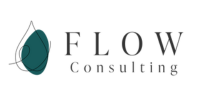
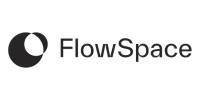







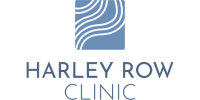
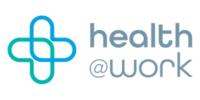



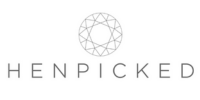






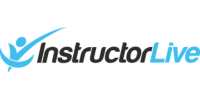

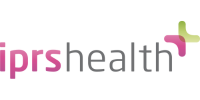
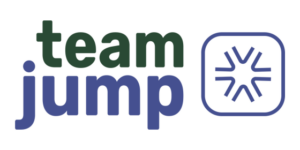
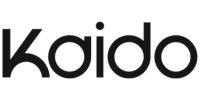





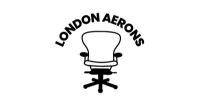
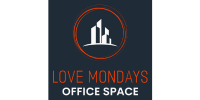

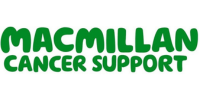
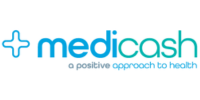


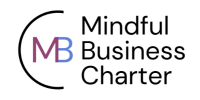
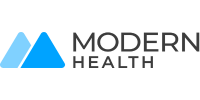




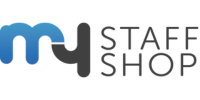




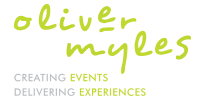

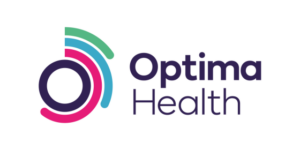




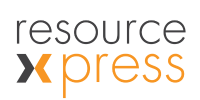

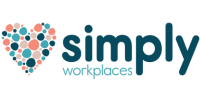
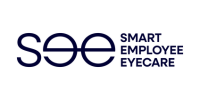




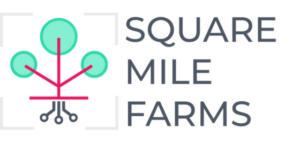



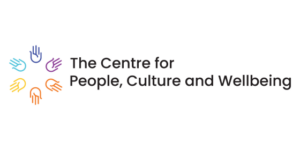







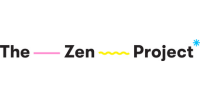
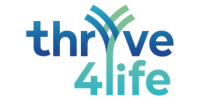


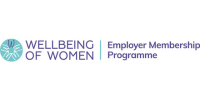

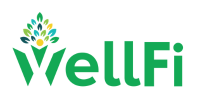

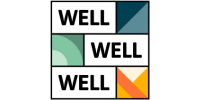
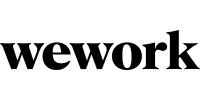
















































































































































































































































AGENDA
Delivering actionable insights to accelerate cultural change.

Speakers
Visionary thinkers from a broad range of business sectors.

Leaders’ Club
The UK’s most innovative leaders.

Exhibitors
Innovative ideas & solutions to build better workplaces.
What’s On
The Watercooler Conference and exhibition content focuses on the key pillars of wellbeing, employee engagement and culture change to enable you to build a comprehensive, strategic approach for a more productive business. As well as a series of focused workshops, the 2025 event will feature three parallel tracks running across both days. Now in its fourth year, the conference brings together some of the UK’s brightest and best.

Conference
Three track conferences running side-by-side featuring thought-leading speakers and influencers, it’s held as a ‘silent disco’ format for focused and uninterrupted discussion.

Workshops
Interactive workshop sessions held within the main exhibition hall, featuring deep-dive insight and solution partner case-studies and showcases.
Working Well Beings Podcast
Exploring the Stories of Wellbeing Leaders. This special edition series was recorded LIVE at the Watercooler 2024.

Exhibition
The Watercooler exhibition is filled with leading solution partners who are at the forefront of helping businesses deliver workplace culture and wellbeing programmes.

1-2-1 Meetings
Fast-track your supplier and technology partner search via our 1-2-1 meetings programme. Just indicate your interest on the registration form and we’ll do the rest!

The Office
Get the full 360 Workspace and Workplace Experience at the gathering of workplace experts; Workspace Design, FM, Corporate Real Estate, Workplace Strategy and Property.
Speakers

Dame Carol Black GBE
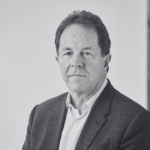
Peter Cheese


Mohammad Koheeallee


Ruth Jackson
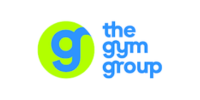

Astha Mittal
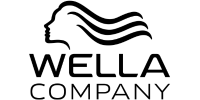

Jason Bloomfield


Carole Smets
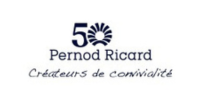
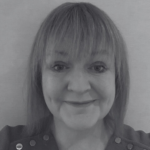
Fiona McAslan
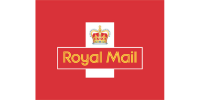
Exhibitors
Latest Make A Difference News
Employers need to prioritise humanness and connection to avoid sleep-walking into an automated, isolated workplace which is bad for wellbeing and productivity: this was a key theme speakers were warning delegates about today, on the first day of The Watercooler Event at Excel London.
As Peter Cheese, CEO of the CIPD, emphasised in a panel session on AI, it’s crucial that the industry “consciously designs” good work, but too many are currently slipping into tech-led cultures which sideline humanity and connection.
“We need to lean in as a profession to design jobs of the future. There’s big opportunities but we need to design them. It won’t happen by accident,” he said.
AI is the greatest mirror yet
A particular opportunity he cited was the ability for AI to be the “greatest mirror yet created to understand inherent human bias”. This awareness would then enable organisations to better tackle bias in their individual cultures.
He added that this would require addressing tough questions about what it means to be human and what kind of humanity we want to design into the workplace of the future.
“The more we talk about tech, the more I’m hearing about the importance of human skills like collaboration, critical thinking and empathy. We need to train our managers better through this change,” he said.
The panel agreed that there are many positive opportunities for AI to boost both productivity and wellbeing by facilitating connection and humanness, rather than detracting from these.
Free up time for people related work
Kirstin Furber, People Director, Channel 4, for example, advocated for using AI to free up time for more “challenging” people related work to enhance working relationships. Similarly, with tasks like copywriting and preparing presentations, while AI can increase productivity and reduce stress by saving time, it only works she said “if we add the human element ourselves”.
Likewise in the session on the future of EAPs, a key point to emerge was that employers can have all the sophisticated technological solutions in place but, if you don’t communicate to employees about them in a human, relatable way, you will not get high uptake.
Panellist Farah Khan, EMEA Head of Wellness at Goldman Sachs, who spoke about how a new approach using Lyra Health had led to an increase in EAP uptake said:
“It’s all about how you package your support. It can be confusing for employees. Should they use the EAP? PMI? The NHS? You have to communicate that you will help them understand the support there for them. It has to be succinct and relatable.”
Humanise work again
Similarly, Dr Eliza Filby, Author of Inheritocracy, in her fireside chat with Dame Carol Black about the multigenerational workforce emphasised the power of connection and humanness to create thriving workplace cultures which work for all ages.
She called on the industry to put human to human connection at the heart of their intergenerational strategies as the best way to foster better, more productive working relationships. She talked about the detrimental effects of the “destroyed bonds of connection” in society – like the demise of the Church, increased remote working and automisation of daily living, such as automated supermarket checkouts – and how this has created an opportunity and responsibility for employers to provide essential connection to fill the wellbeing gap.
“We have so few human interactions now. Life is being dehumanised. And at work we’ve tried to turn robots into humans, and humans into robots. We need to get back to humanising the culture of work, and that doesn’t mean running a wellbeing programme. It means giving time and space to delivering human-centric management and connecting on a human level.”
You might also like:
The Watercooler: employers need to address lack of connection & humanness in new world of work
Tackling conflicts head-on is basic to avoid being taken hostage. When we do not address a problem and take action to solve it, due to passivity or the inability to make a clear choice, we are acting like a hostage.
When we have a hostage mind-set, we come to believe in the mind’s eye that a problem cannot be solved and so, interestingly enough, find ways not to solve it.
But, in fact, the opposite is possible: learning to enjoy solving conflicts is a possibility for everyone.
Maintaining the bond through conflict
A secret of successful conflict resolution is the ability to continually maintain the bond and to re-bond when a bond is broken too quickly, for whatever reason.
Taking a positive approach to conflict involves understanding that bonding is fundamental to any resolution. Being curious and creative, and searching for compromise and cooperation, have their own rewards.
The manifestations of conflict are many, yet the principles for resolving conflict are simple.
Understanding and knowing the complexity of conflict and, at the same time, understanding its simplicity is an essential mind-set that we have observed in great peacemakers, mediators, and hostage negotiators.
It can be dangerous to see only complexity or only simplicity. Managing this paradox is the dilemma in every conflict situation.
4 Fundamental principles
As used by hostage negotiators, there are four fundamental principles to resolve conflict successfully:
1. Never create an enemy
Transform adversaries into allies and partners. This is a fundamental principle of transactional analysis, as expressed in Eric Berne’s phrase “I’m OK, you’re OK.”
This idea is both a central truth and a fundamental tool in communicating mutual respect, positive regard, and cooperation. Every transaction must carry the power of this message – even when using strong, limit-setting boundaries, referred to as “tough love.”
2. The person is never the problem
Separate the person from the problem and focus on the issues to be resolved, not the individual.
This is a basic principle to avoid escalations in the conflict-resolution process. It can be counterintuitive because our culture promotes the “demonising” of individuals in the political and religious arena, in children’s literature, and in Hollywood films.
It is hardly surprising then that we tend to personalise a conflict at work or at home, unless we have learned another model from strong secure bases.
Often, the thinking is that if only we can get rid of the person, then everything will be okay. This is a mind-set challenge and, once mastered, will prevent us from being taken hostage in the emotions of a conflict.
It is all too easy to view someone who is different from us in any way – be it appearance, language,culture, attitude, or approach – as a potential threat or enemy.
This is a poor base for dialogue and is likely to lead to an emotional standoff.
As our businesses are increasingly global and our workplaces and cities become more and more diverse, the possibilities for misunderstanding are immense. It is easy for a person to feel attacked or threatened, and therefore every effort must be made to separate the person from the problem.
3. Maintain a sincere desire to help the other person get what they want or need
It is all too easy to become hostages to ourselves by overemphasising what we want without first communicating a sincere and authentic desire to help the other.
We must maintain the bond with the other person in every transaction, verbal and nonverbal, by showing interest in what they want as well as what we want. Saying no, or putting the fish on the table, can be done as part of showing interest in the other person’s wants or needs.
Sometimes the underlying battle in the conflict is to get the detached manager to show appropriate and authentic interest in the wellbeing of team members.
The independent loners must learn to bond and show interest in people if they want to become effective leaders.
4. Never be hijacked by attacks and intense emotions
Never take aggressive words or actions personally.
Keep your thoughts clear and never lose sight of the goal.
When you feel like withdrawing or attacking someone, quickly cancel that thought in your mind’s eye and replace it with a desire to help or a desire to carry on in your personal or professional role. Have you ever done or said something that you regretted later?
You were quite simply taken hostage.
About the author
Professor George Kohlrieser, is Professor of Leadership and Organisational Behaviour at the International Institute for Management Development (IMD). He is co-author, with Andrew Kohlrieser, of Hostage at the Table (2nd edition), and this article is adapted from an extract of this book about ‘Forming bonds in high pressure environments’.
You might also like:
What I learnt as a Hostage Negotiator about dealing with conflict and difference
Training leaders and managers is constantly cited as one of the most impactful things an employer can do to improve the Health and Wellbeing of its employee base.
Leadership development is a key topic being covered at the forthcoming Watercooler Event on 7th & 8th May at ExCel in London, with sessions on ‘How to create a thriving workplace culture and survive a toxic one’, case studies on building thriving workplaces and ‘overcoming silos to focus on leadership development’.
For more information on The Watercooler, see the foot of this article
Yet, despite the recognition that this is important, there’s also evidence that line managers are getting worse at supporting team members (see this article) due to the increasing number of demands landing on their desks, alongside shrinking resources.
One of the biggest obstacles is the lack of time available for training and making line managers themselves feel supported and psychologically safe. However, some employers – like Knight Frank Promise, in this case – are recognising that there needs to be new thinking and prioritisation around investing in this time and training. The firm hired mental health and wellbeing consultancy PVL following a mental health crisis in order to help them do this.
We spoke to Siobhan Bird, Head of People and Culture at Knight Frank Promise, to find out more…
Can you tell me what prompted you to take on PVL to do leadership wellbeing training?
Yes. We’d been created as a subsidiary of the Knight Frank group. It was an exciting time, we’d appointed a new leadership team and there was a real opportunity to make a mark.
Then our Managing Director got a call one Sunday afternoon to say that, sadly, one of his team members had taken their own life that weekend. Understandably, he was very affected by this as he’d not seen it coming, even though this person had been at work all week and had attended a work social. It felt like a bolt out of the blue.
It really knocked everyone for six. And we were really struck by the questions: How did we not know? Could we have done something differently? How could we make a difference in the future?
That year, one of our people won an inspiration award for championing openness in mental health, part of the award was a financial amount to be used for something personal or developmental, and he wanted to use it to drive the agenda forward. That’s where it all started. He found PVL, and we brought them in to take us on our journey, along side us rather than selling us a solution.
What do you think is different from buying a ‘solution’ or ‘package’, and working more organically than this?
We felt listened to and like we were co-creating the solution with PVL that was right for our company.
Obviously, they have experience and ideas, and seen what works, but there was a handholding and a genuine interest in what was going to work for us.
They really tried to understand what our business was, and what our challenges were, over 80% of our people are based on a site which is not our office, it is the workplace of another company. Their site is their day-to-day location, and so that presents an engagement issue around ensuring they feel they belong to Knight Frank Promise, which can be a real challenge. They can sometimes feel like they work for the building they’re based in, rather than for us.
What was a key insight for you in finding the right solution?
The real golden nugget for us was psychological safety. It was really important for us that our people felt they could be open and honest with each other, and that has been the core of the work that we’ve done and continue to do. It’s a work in progress.
What practical help did having an external provider offer?
PVL helped to draft the strategy and the stages of that strategy. We were able to set out the end goal and the steps to go through to get there. Then they trained our Leaders, and helped us to create and train a Champions Network.
What practical tips would you give other people looking to organise leadership wellbeing training?
Make sure your people understand why you’re doing it, and make it an authentic act. Then make sure it’s relevant to them. It’s not just sheep dipping everyone through a programme – it needs to make a difference.
After initial training was this training ‘done’, or is training also ongoing?
Training is ongoing. We continue to engage with PVL around good practice and sessions on specific issues.
We’ve held some drop-in sessions with our line managers for example. Over about six weeks we ran sessions where they can come in and simply say ‘look, I’ve got this issue’.
These work well because they are small groups and people can talk it through with each other and test ideas.
What’s the feedback from the Leaders been like?
Excellent. Our people really bought into it. They really wanted to know ‘when can I step in? What should I be saying?’. Then, without any real encouragement from us, they were asking ‘what can I do about this?’
Fourteen people volunteered to be our mental health champions and went through the training course together. That was spine tingling in itself because, due to the nature of our work, these people don’t see each other very often, if ever. But, almost instantly, there was a safe environment created and they divulged information very openly; everything was on the table.
The training actually gave us much more than mental health awareness – it gave us social connection and wellbeing, too, with people talking to, and engaging with, colleagues. When you share personal information, you can create close bonds quickly.
It also opens up new perspectives, from new relationships.
What’s been the biggest challenge?
Time.
Everyone is so busy being busy. And that’s not unique to our company.
But facilities management has to be very reactive because when something goes wrong, it needs to be fixed urgently.
But I’m also a massive advocate of taking a little bit of time out of your working day to stop and think or to reframe something – I know I’m better and more productive if I have.
How do you encourage your people to take a breather for their Wellbeing and Productivity?
On World Mental Health Day, we sent everybody in the company a Kit Kat and a little note that said ‘Take 10 minutes, enjoy your break and your Kit Kat’.
It was a small gesture, but we had lovely feedback about it.
We’ve actually got PVL coming in later on in the year to talk about giving ourselves time and space. Hoping we can give ourselves permission to look at things differently – just because it’s always been done that way doesn’t mean it’s the way we should always be doing it, right?
You can hear experts speak about Leadership Development at The Watercooler Event, which takes place on 7th and 8th May 2025 at ExCeL in London, which is Europe’s leading trade show, with free-to-attend content, dedicated to creating workplaces that empower both people and business to thrive.
You can find out more and register to attend here.
You might also like:
Leadership training: ‘just because it’s always been done that way doesn’t mean it’s the best way’
With the new Employment Rights Bill rapidly progressing through parliament, and expected to be adopted in 2026, progressive employers are already taking action on menopause-friendly policies and practices.
Mansfield Building Society and global financial services group Nomura, for example, have both been just awarded Menopause Friendly Accreditation (photo above is of Nomura Wellbeing Director Kirsty McLean picking up award). In order to achieve this accreditation, both employers were assessed by an independent panel and had to demonstrate evidence of their effectiveness in five key areas: culture, policies and practices, training, engagement and working environment.
The forthcoming Bill will require that all employers with over 250 employees put a ‘Menopause Action Plan’ in place to support menopausal women. It also orders employers to provide more time for women to seek legal advice if preparing a tribunal claim related to menopause.
Deborah Garlick, CEO and Founder of Henpicked, who is speaking about menopause and wider women’s health on a panel at the The Watercooler Event next week, said:
“The Employment Rights Bill is all about employers, not just having a plan, but requiring them to act on it to change the lived experience of menopause in the workplace. It’s simply not enough to have a policy – it’s about taking action and bringing change.”
Accreditation shows commitment to employee wellbeing
Commenting on the accreditation, John Goff, Global Head of Structuring and Exec Sponsor of the Gender Balance Network at Nomura, said:
“We want everyone in Nomura to feel valued, respected and empowered in the workplace, regardless of their stage of life. Given the impact menopause can have on people’s lives, both at work and at home, we believe it’s our responsibility to ensure everyone across our business feels comfortable and supported during this journey.”
Vickie Preston, Head of People at Mansfield Building Society, said the accreditation was an important step for the employer because it signalled to employees its commitment “to putting people first”.
Particularly proud work led by a male employee
She added that she was particularly proud that the building society’s menopause work had been led by a man, Learning and Development specialist Bob Crowe. This had led to employees wearing t-shirts saying ‘Be like Bob’ to raise awareness and spark conversations.
Preston said:
“Bob has been the heart and drive behind all we have achieved for menopause and we are very proud to have a man leading the charge and making a huge difference.”
The Menopause Friendly Accreditation was established by Henpicked in 2020 to certify high standards and proven practices that embrace menopause in the workplace.
Menopause centre stage at The Watercooler Event
Garlick, who will be talking about this topic further at The Watercooler Event next week, said:
“Mansfield Building Society understood from the start that education is at the heart of change. It is also incredibly heartening to see the driving force behind the whole initiative is a man as we know taking such a bold stance is a great way to break barriers and taboos. This immediately dispelled gender stereotypes and encouraged other male colleagues to enter the conversation and play their part in helping the organisation become menopause friendly.”
Key to Nomura and Mansfield’s commitment to menopause in the workplace have been actions like leadership training, real-life policies which include innovations such as paid leave instead of sick leave, menopause cafes to sustain awareness levels, on-site GPs with menopause training, and qualified nutritionists.
You can hear Deborah speak at The Watercooler Event, which takes place on 7th and 8th May 2025 at ExCeL in London, which is Europe’s leading trade show, with free-to-attend content, dedicated to creating workplaces that empower both people and business to thrive. She’s speaking on Day 1, as part of the Prevention, Intervention, Holistic & Inclusive Wellbeing stream on a panel about menopause and wider women’s health. Ruth Jackson, Chief People Officer at the Gym Group, is also speaking on this panel.
You can find out more and register to attend here.
You might also like:
Employers prepare for the new Bill on menopause support at work
Ryan Jans, Regional Head of Leasing at WeWork, is talking about one of the hottest, most controversial topics at this year’s Watercooler Event: the return-to-office mandate.
To him, this is a culture issue that is not going to be resolved by a mandate and, at the heart of success, lies an employer’s ability to foster connection and community in communal spaces. This ties in perfectly with the Mental Health Awareness Week, which runs from 12th – 18th May, and this year has the theme of ‘community’.
(Ryan will be speaking on about ‘Prioritising moments over mandates – why the future of work is driven by intention’ on Day 1 of the Watercooler Event, on 7th and 8th May at ExCel, London. For more information, see the foot of this article)
Coming from a real estate background rather than health and wellbeing, he gives us his unique perspective on the topic and his predictions for where progressive employers need to be aiming, in terms of the office space being a force for collective good.
We talked to him ahead of his appearance at The Watercooler…
You’re talking about the return to office debate. Tell me about that…
Honestly? It feels like a lot of people are regurgitating the same arguments. I actually think we’re having the wrong conversations. They are too binary.
What should we be talking about?
Office purpose. That’s the piece that seems to be missing. Covid forced us to rethink what the office is for. But that was half a decade ago, yet we are still having a debate about ‘returning to normal’. If you are still pushing for the world to ‘go back’, you are wasting your time. When it comes to the office space, some are getting it really right, and some are lagging behind. And I don’t think it has anything to do with back-to-work mandates.
What do you think offices are for now? Which companies would you say are ‘getting it right’?
The companies that are leading the way are those that understand the office now needs to be a place that people want to go to, a ‘destination workplace’.
These offices are full of great amenities that encourage collaboration, purpose and engagement. But even today, that’s also not enough. Nobody wants to show up to a shiny, well-designed office that is only 40% full, where you’re jumping on a Zoom call because most of the team isn’t there.
So, we need to go one step further. The office needs to have intention. It should foster a community where people feel like they are part of something bigger. When it’s done well, the impact is remarkable.
So how do you create community and these kinds of purpose-driven spaces?
I work with thousands of businesses all over the world, helping them rethink how they engage with their employees in our spaces. Sure, free breakfasts and lunchtime yoga classes might get people through the front door, but that’s not what builds a community.
Presence is important, but only when it’s tied to intention and connection. When I talk about intention, I’m talking about purposeful ‘micro moments’ in the day that are intentionally designed to bring people together, that may facilitate brainstorming, or bolster company culture – it’s the secret ingredient to feeling like workers belong, they’re part of a team, they have social relationships with colleagues and friends. We’re social creatures, and if all you’re focusing on is how many people show up to the office, you’re missing the point.
Can you give me an example of this?
Absolutely. Take our team in Singapore, they’ve implemented a daily lunch hour where everyone shuts down their laptops, heads to the pantry, and just chats about life. This can be about work, family, weekend plans, whatever. It’s been amazing to see how this simple change has brought the team closer and made them feel more aligned and connected.
Do you think, from what you’ve seen, there is an ‘ideal’ number of days to work at home and the office?
Honestly, as cliché as it is, there is no one-size-fits-all answer, because every business has its own culture, needs and priorities. That being said, we are definitely seeing a trend toward the formalisation of hybrid working, where teams come together on specific days, usually about three days a week.
Can you tell us about any companies who you think have got it right?
Currys is a great example. They were located on the outskirts of London, but they made the bold move to a more central, high-quality space that is designed for connection and productivity. They leverage their office space to bring central teams together, improve corporate efficiency but also build that invaluable community and culture. And it’s paying off.
How can you measure the ‘success’ of a space?
As other experts in the industry will know, measuring ROI in office spaces has become a lot trickier. Five years ago when you were having a real estate discussion, it was generally with the Head of Corporate Real Estate or the Chief Financial Officer looking at numbers and statistics. Today, it’s more common to see the Head of People or HR involved in these conversations, who are responsible for keeping a pulse on how employees are feeling, and what their overall experience is like.
It’s less about hard metrics like badge swipes, and more about staff churn, NPS scores, and listening circles and surveys that tap into how happy employees are actually feeling in the office. Why? Because the value of coming in should outweigh the cost of commuting.
How do Curry’s measure the success of their space?
They take a close look at how their space is being used, tweaking work models, adjusting layouts, and finding ways to make things more engaging. They also check in with employees through surveys to see how everyone’s feeling. Curry’s is a great example of a company that really gets their workforce. The feedback has been positive, and their office utilisation is very strong.
How does a diverse workforce play into the role of the overall workplace experience?
The connection and community of an office can build relationships with like-minded individuals, and also people that have a completely different background or lifestyle to you. The power of this cannot be overstated. At the office, work projects, deadlines, tasks create a shared interest and a goal to hit. There’s a sense of togetherness, and it’s the role of the workplace to facilitate this connection.
Something I have noticed is a widening gap between generational workers. We’re seeing younger generations pushing businesses to be more thoughtful about managing the psychological contract that exists between a worker and a workplace, and they’re not afraid to call businesses out on it. My view is, let’s open the lid on these conversations. It’s incredibly important to figure out ways to move forward and innovate.
What do you think will be the big trends regarding workplaces over the next year?
Like I said earlier, I think we’re going to continue to see the formalisation of hybrid work; a continued shift from an unstructured to structured model. It’s true that certain industries and professions will need to come together 5 days a week, but the majority of industries will figure out and land on a hybrid set up that works for them.
Also, I think younger workers will start flocking back to central hubs in big cities. They’re craving culture, energy, and a huge range of opportunities to socialise that you can only really get in big cities. I can definitely see that becoming a big trend.
What are you most looking forward to at The Watercooler Event?
I’m looking forward to hearing other experts talk about how they are thinking about the future of the office, and the trends they’re seeing firsthand. We’ve made so much progress as an industry, but the world of work is changing fast, and so is the office. We’re all constantly coming up with new ideas and fresh perspectives, so it’s exciting to be part of that.
You can hear Ryan speak at The Watercooler Event, which takes place on 7th and 8th May 2025 at ExCeL in London, which is Europe’s leading trade show, with free-to-attend content, dedicated to creating workplaces that empower both people and business to thrive.
You can find out more and register to attend here.
You might also like:
Back-to-office mandate: ‘if all you’re focusing on is how many people show up to the office, you’re missing the point’
As The Office Event 2025 fast approaches, we’re celebrating the inspiring companies that are transforming workspaces through design, technology, and wellbeing. From acoustic pods and plant-filled interiors to AI-powered feedback platforms and dynamic office furniture, our exhibitor spotlight series has introduced some of the most forward-thinking brands in the industry. Here’s a round-up of the spotlighted exhibitors you’ll find at ExCeL London, 7th and 8th May.
Nook – Human-centred design for healthier spaces
Nook’s innovative pods are redefining the role of space in supporting wellbeing, focus, and neuroinclusion. Whether in hospitals, shopping centres, or offices, these modular, acoustic spaces create calm in the chaos. In Dorset’s new hospital, beach-hut-coloured pods are already helping visitors and staff find moments of comfort. Meanwhile, at Frenchgate Shopping Centre, Nook’s collaboration with Autism Plus has created a sensory-friendly stop designed to support neurodivergent individuals.
Certified as sensory-friendly by IBCCES, Nook’s pods are a practical and inclusive solution for the modern workplace—providing quiet zones, wellness retreats, and collaborative nooks wherever they’re needed.
Work With Island – Serenity in the workplace
Work With Island creates modular, soundproof booths and meeting rooms that eliminate distractions and support focused work in busy, hybrid environments. Made from sustainable materials like recycled clothing, their booths are quick to install, ISO-certified for sound insulation, and designed to blend effortlessly into any workspace.
Whether for one-on-one calls or team huddles, Work With Island’s acoustic solutions empower productivity and peace of mind—giving employees the freedom to focus without leaving the office.

Branded Biophilia – Bringing nature into the workplace
Branded Biophilia is transforming offices with nature-inspired, sustainable designs. From moss walls and plant installations to eco signage and upcycled flooring, their biophilic solutions enhance air quality, mental wellbeing, and employee happiness.
Their fully branded, end-to-end design service supports everything from bespoke plant displays to large-scale green refits—helping companies meet their ESG goals while creating vibrant, healthy workspaces.
WeWork – The future of flexible work
A pioneer in coworking, WeWork offers over 45 million square feet of flexible workspace globally, serving everyone from startups to global enterprises. Their people-centric environments are designed for collaboration, creativity, and wellbeing.
At The Office Event, WeWork will showcase how their dynamic workspaces can be tailored to meet your company’s evolving needs—through customisable layouts, sustainability initiatives, and a thriving community model that supports business growth.

The Employee Experience Project – Shaping thriving cultures
This initiative helps organisations transform workplace culture with practical tools, expert input, and hands-on support. Grounded in behavioural economics and positive psychology, The Employee Experience Project has helped hundreds of companies create cultures that boost engagement, retention, and commercial performance.
Working closely with HR teams and leadership, the project provides a roadmap to turn cultural goals into everyday practices—ensuring that workplace experience becomes a shared business priority.

Gresham Furniture – Inclusive, innovative furniture design
Gresham Furniture stands out with its 360-degree in-house product development—from concept to manufacturing. With a strong focus on inclusivity, they’ve designed the Kulture Rox chair to support neurodivergent individuals, offering a soothing rocking motion that helps regulate sensory input.
Other highlights include the Sound Station chair, the first with built-in Apple AirPlay and Bluetooth, and the Mirage Hutches—private, calming spaces within open offices. Gresham’s approach combines functionality, style, and accessibility, making modern workspaces more supportive for everyone.
Interaction – Inspiring office design that delivers
Interaction has spent over 30 years crafting offices that engage, inspire, and retain top talent. With their motto “Perfection at Pace”, they deliver design and fit-out services that prioritise culture, creativity, and flexibility.
Their people-first spaces are designed to reflect brand identity while supporting a range of working styles. Whether it’s for ambitious businesses or forward-thinking landlords, Interaction’s office environments are built to help people and organisations thrive.
Oktra – Designing human-centric, sustainable workplaces
A certified B Corp, Oktra combines design expertise with a strong sustainability ethos to build future-ready workspaces. Their “No Boundaries” approach merges cutting-edge tech, deep client collaboration, and creative thinking to support long-term business goals.
While Oktra won’t have a physical stand at the event, they’ll be on-site to meet with buyers and discuss how they can bring transformative office solutions to life—from design concept to delivery.
Future of the Office – Strategy-driven workplace transformation
Future of the Office specialises in creating agile, employee-centric spaces for the Knowledge Era. By blending stakeholder input, cultural alignment, and flexible design, they help organisations turn the workplace into a strategic asset.
Their work spans leadership alignment, sustainability, and inclusive environments—all delivered through a lens of innovation and adaptability for hybrid work.
Audiem – Unlocking employee insights with AI
Audiem uses AI to turn employee feedback into actionable insight. Their platform captures unstructured data—from surveys to helpdesk tickets—and translates it into meaningful themes, sentiment analysis, and recommendations.
With multilingual support and intuitive dashboards, Audiem empowers organisations to listen deeply and act effectively—giving voice to every employee and driving measurable improvements in workplace experience.
Workplace Geeks Podcast – Bridging academia and business
Hosted by Chris Moriarty and Ian Ellison, the award-winning Workplace Geeks podcast explores cutting-edge workplace research with the experts behind it. With each episode diving into methodologies, findings, and real-world impacts, the podcast creates a space where academia and business meet.
It’s a must-listen for anyone interested in what truly shapes the workplace—from employee value to organisational performance.
deskbird – Simplifying hybrid workplaces
deskbird is an intuitive workplace experience platform that empowers teams to manage hybrid work schedules with ease. With features like desk booking, office visibility, and smart integrations, deskbird helps organisations optimise space usage and reduce costs.
Backed by major clients like Heineken and UNICEF, and fresh from a $13M Series A round, deskbird is one of Europe’s fastest-growing SaaS startups—helping companies build people-first hybrid workplaces.
Layrd Design – Sustainable, immersive interiors
Layrd Design is an award-winning studio creating interiors that captivate and connect. From workplaces to retail and wellness spaces, their designs are rooted in sustainability, functionality, and community relevance.
Offering full design-and-build services, Layrd ensures seamless delivery and striking results—making spaces that feel both innovative and personal.

Funky Yukka – Greenery that transforms workspaces
Funky Yukka has been greening up offices for over four decades, using real and artificial plants to boost morale, wellbeing, and air quality. Their interior landscaping services cover everything from custom displays to full maintenance, with a commitment to creativity and eco-consciousness.
With clients across the UK and beyond, Funky Yukka makes it easy to add a splash of nature—and a lot of personality—to your office.
Don’t miss your chance to meet these incredible exhibitors in person at The Office Event 2025, 7th & 8th May at ExCeL London.
You might also like:
Exhibitor spotlight round-up: Meet the companies shaping the future of the workplace
Surely it’s just common sense to know that happier workers are more productive and profitable?
This was a question I was asked by an audience member recently, when talking at an event about the sustainable business case for investing in employee health and wellbeing.
(Charlotte will be launching her white paper “The Business Case for Wellbeing and the Mindful Business Charter” at the free-to-attend Watercooler Event on 7th & 8th May in London, see foot of this article for more information).
While instinctively most people can see the innate truth in the link – especially readers on this site – it does seem that for some decision makers there is often a significant disconnect. This is between 1) what is perceived to be the best way to run a profitable business and 2) what research – real world, reliable, and replicable research – tells us.
Risky business: pressure to remove programmes
Over the past few months it has been clear that many professionals in HR, especially those with responsibilities for DEI, have been looking at developments on the global political stage with concern.
Pressure to reduce, or even remove programmes that promote diversity and inclusion, seem to focus on the idea that they cause increased business risk, are a distraction from hard work and are somehow holding businesses back.
But these ideas do not have any basis in fact.
Throwing the baby out with the bathwater…
Conversely, it seems that organisations that follow them could end up “throwing the baby out with the bath water.”
This is why looking at the research that shows how much better businesses do financially when they reduce employee stress is so important.
Especially when viewed through a risk lens, the evidence is very clear: positive employee wellbeing can reduce needless expenditure and increase revenue when done correctly.
Legal duties and costly mistakes
Employers who want to avoid costly employee tribunals should be careful to heed advice from the Health and Safety Executive, which states that:
“Employers have a legal duty to protect workers from stress at work by doing a risk assessment and acting on it. You should assess the risk of stress, and its impact on mental and physical ill-health, in the same way as you assess other work-related health and safety risks.”
In the UK employers can be held liable for the negative impacts of stress due to the workplace in the same way as they would be for a physical workplace injury.
Stress can lead to costly mistakes
Of course, risk to the business doesn’t come just from employees who have been made unwell. Consider mistakes made by overly-stressed employees. A recent report showed that highly stressed employees are eleven times more likely to make mistakes that “miss deadlines, compromise quality or compliance standards and put their organisations at risk.”
Stress also causes lapses in ethical judgement, perhaps due to it creating a reduced ability to analyse information, or self-regulate. Almost half of respondents to a study conducted by The American Society of Chartered Life Underwriters, The Chartered Financial Consultants, and The Ethics Officer Association, admitted to unethical or even illegal acts being carried out due to job pressure.
Avoiding risky exhaustion
Business indemnity insurers are certainly taking note of these issues and making it clear that employers can “avoid significant claims by working to change its culture in ways that discourage employees from working at times when they are more prone to being exhausted or distracted.”
Considering not only the costs of rectifying mistakes, increased premiums and potential court cases, there is also the risk of reputational damage to contend with, both in terms of your reputation as an employer, and as a provider of services, if mistakes are being made that are seen to be a result of inadequate concern for wellbeing.
How to improve things
Having studied over 120 sources in a white paper that will be launched at the MAD World Watercooler event on this topic, it’s clear that businesses that prioritise employee wellbeing—by improving workplace practices, implementing preventative measures to safeguard employees, and reducing avoidable stress—not only foster healthier and more productive environments but also achieve greater profitability.
By undertaking systemic change that reduces unnecessary stress, as well as avoiding the costs outlined above, we can reduce absence, presenteeism, and burnout, while also increasing productivity, collaboration, creativity and revenue – with businesses who follow these models outperforming the stock market by 57%.
We have the “common sense” and the data to support it. We have the figures to show what happens when we don’t take employee wellbeing seriously, and the evidence to show how we can excel when we do.
All we need to do now is to join it up to make it happen.
About the author
Charlotte Clegg MSc. is a BACP registered psychotherapist with experience of wellbeing and therapy provision in many sectors including retail, corporate, and charitable sectors. She has a keen interest in research, bringing an evidence based approach to her work both in private practice, and in her work as Community Engagement Executive for The Mindful Business Charter, a charity looking to reduce unnecessary stress to create healthier more productive workplaces.
You can hear Charlotte speak more on this topic at The Watercooler Event, on 7th and 8th May 2025at ExCeL in London, which is Europe’s leading trade show, with free-to-attend content, dedicated to creating workplaces that empower both people and business to thrive. She will be launching her white paper “The Business Case for Wellbeing and the MBC” at the Watercooler Event.
You can find out more and register to attend here.
You might also like:
The leadership disconnect: why we must keep bringing leaders back to the data
As the modern workplace continues to evolve, a powerful new trend is gaining momentum across HR, wellbeing, and employee experience strategies: the rise of rental for flexibility.
This shift isn’t just about cost-cutting. It’s about meeting the growing demand for personalisation, autonomy, and adaptability — essential qualities in today’s dynamic work environment. Flexibility is no longer a nice-to-have; it’s becoming a core expectation from employees and a useful lever for employers seeking to optimise space, boost engagement, and stay ahead of change.
Why flexibility now matters more than ever
If you’re deciding whether flexible rentals are the right approach for your organisation, join our free-to-attend Make A Difference webinar, together with Fluid: “Flex on Demand: How Flexible Rentals Are Reshaping the Future of Work” on Wednesday 2nd July, from 10.00am – 11.00am.
You’ll learn:
- When, in the face of change, flexibility makes sense both for employees and for the bottom line
- How to optimise workplace space with flexible furniture solutions
- How to create vibrant, health-boosting environments with rented plant life
- The benefits of renting art for the workplace
Hear direct insights from industry leaders:
- Warwick Flint, Managing Director, Fluid Furniture
- Russell Edwards, Client Relations Director, Vantage Spaces
- Katie Henry, Director, Art in Offices
Who should attend:
- Workplace, Facilities and Real Estate Leaders
- Employee Experience and HR Leaders
- Wellbeing and DE&I Leaders
Register here now to explore how flexible rentals can transform your workplace experience and give your people — and your business — room to thrive.
Free webinar: Flex on demand – how flexible rentals are reshaping the future of work
Stella Gavinho, Group Head of Wellbeing at Entain, believes leadership buy-in is crucial to a successful global employee health and wellbeing programme, and will be talking about this on a panel at The Watercooler Event, alongside senior executives from United Airlines and Sky Television.
The Watercooler Event takes place on 7th and 8th May 2025 at ExCeL in London, and is Europe’s leading trade show, with free-to-attend content, dedicated to employee health and wellbeing.
You can find out more and register to attend here.
With more than 11 years experience at Bupa working in wellbeing roles, latterly as Head of Global Workplace Health and Wellbeing, Gavinho is well placed to talk about the challenges of global roll outs, the need for a more personalised EAP experience and moving away from ‘classic’ return on investment measures.
We spoke to her ahead of her appearance at The Watercooler…
What are the main challenges that you face, because your role is global?
Gosh, where do I start?!
There’s the challenge of: how do you scale to over 20 countries? How can you be fair with a proposition that is for 30,000 people? How can this proposition feel personalised, and relatable, no matter where you are in the world?
So, the big question – how do you overcome all those challenges?
I’m lucky because I got a lot of valuable experience from working at Bupa, which is one of the pioneers of workplace health and wellbeing.
It gave me experience of seeing this done on a large scale because they had 85,000 employees in over 100 countries.
What is that approach?
It’s about setting up a network first.
You have to have representatives all around the world, as well as team wellbeing leads in every country; typically the lead is from HR. They are responsible for setting up a community of champions and mental health first aiders to help them.
And presumably you need to make these leads feel part of the global team?
Yes. We get together on a monthly basis and decide on the topics that we will cover, and how we can land these in each country.
As I’ve been in the role 6 years now, the network is mature and we have defined, together, global standards, which everyone should attain consistently. That includes things like free therapy and access to an online gym, etc.
But there’s also a whole agenda that needs to be localised, led by this local community. But I make myself, and my team, available for consultancy if there’s anything they’re not sure about, or never done before.
We’ve been able to create a learning environment where people are learning from each other and sharing assets.
What were the biggest challenges in setting up this network at the start?
Building momentum. At the beginning my team was very much in the centre, managing everything and bringing that momentum. Now the momentum is generated, it’s very different.
What advice would you have for any readers who are starting out trying to set up a network, with a global remit?
First and foremost, get leadership buy-in. Without that, it’s very hard to start from bottom up. It’s much easier to work top down, but sometimes that just has to be done.
To get buy-in in every country, did you have to get a senior sponsor in every country?
Yes. I had to start from scratch in all countries.
I’d advise starting with your biggest communities and identify a leader to sponsor the programme, then take a phased approach to roll out.
What advice would you have on rolling out a global programme like this?
Don’t be too strict on your model. Our company structure is different in different countries so you need to go with the flow a bit, and go where the energy is! If there are countries asking for your programme, go with them first. Then, once you have five countries on board, you have a network. Now, get them working together and slowly add more countries.
What about differences between countries?
That’s why we really rely on the quality of our lead in each country. You need someone who is knowledgeable and has influence in the country.
Champions can be volunteers and can be any department, any level of expertise, any level of seniority… but for your lead, you want someone who really understands the culture and has a degree of influence. You need this to create the appropriate psychological safety with your network.
My other advice would be to meet a country where they are. In Bulgaria, at the beginning, you couldn’t say the words ‘mental health’ or people would leave the room. So, we agreed not to talk about mental health but to talk about stress instead. Then, slowly, we built on that and started to tackle the stigma.
How do you deal with the different levels that countries are at when you roll out a global initiative, in terms of messaging?
We always have some big global campaigns everyone has to do. Even if we think that it might not land in a country, we’ll do anyway.
We also rolled out the EAP, at the beginning, everywhere, because we’re very passionate about ensuring all employees have support. We did a big campaign around that role out using all our channels, shouting about it for the first two years consistently, even though the actual utilisation at that time was tiny.
That’s what we hear a lot from many employers about low utilisation rates….
Sometimes you need to understand that you are on a journey. You’ll start having some success stories in some areas, and others which need more work. You might need to put more time and energy into some areas, and do something more customised, or hold their hands a bit longer. Then you can build confidence, using data and insights to see the real pain points around the globe that need our attention. Then it’s all about prioritising those.
Where do you get your data from?
Different data points. We use engagement data from suppliers, including utilisation.
When selecting suppliers you need to ask them: how can you help me prove your value? That’s one of the reasons we chose to use Unmind, which provides a more personalised service than a ‘traditional’ EAP and, as a result, we’ve seen 5 times more engagement with this service, even across countries that have more stigma around mental health.
We also have global survey. I am a big fan of that old fashioned way to get data because, for me, if you want to know something, you need to ask your people!
Do you have one provider for your global programmes?
We try but it’s not always possible. Each country has their localised wellbeing initiatives and benefits, depending on budget and local regulations. Consistency is not always required or appropriate.
Are you cutting costs on this kind of work in the current economic climate?
My manta is that when we are in crisis, that is when we have to invest in our people because it’s people that are going to get you out of the crisis. I get that companies need to focus on their bread and butter but you can’t cut off the bakers to do that.
Any advice on getting leadership and the senior management buy-in, for things like this comprehensive study?
It was lucky because it got signed off just before industry started making some cuts.
However, I would encourage your leaders and stakeholders, as I have done, to try and move away from just return on investment. It’s very hard to do the classic calculation for ROI. I talk about return of value. For this I ask question likes: how much are our people engaged, as a result of the activity? How much do they feel their managers care about them?
You can hear Stella speak at The Watercooler Event, which takes place on 7th and 8th May 2025 at ExCeL in London, which is Europe’s leading trade show, with free-to-attend content, dedicated to creating workplaces that empower both people and business to thrive.
You can find out more and register to attend here.
You might also like:

